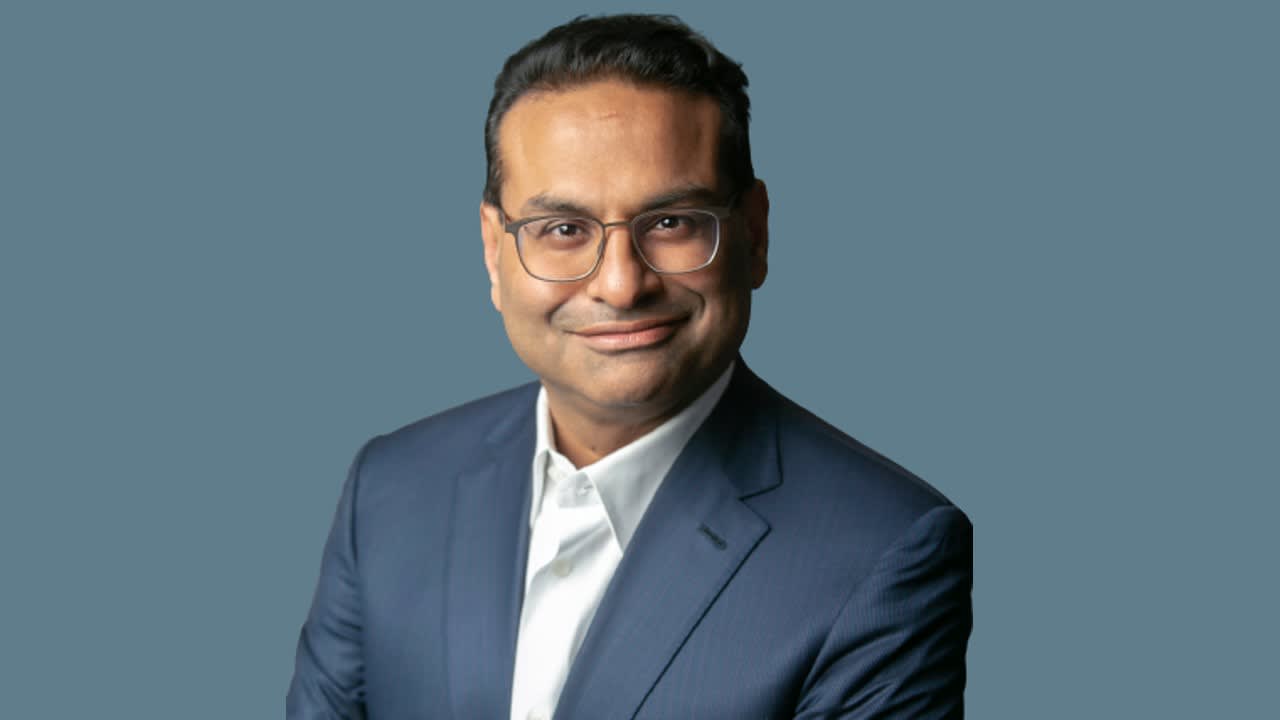Laxman Narasimhan’s Background and Career Path

Laxman Narasimhan, the current CEO of Starbucks, has a distinguished career in the consumer goods industry, marked by strategic leadership and a deep understanding of global markets. His journey began with a solid academic foundation and progressed through various key roles, ultimately leading him to the helm of one of the world’s most recognized coffee brands.
Early Career and Education, Starbucks ceo laxman narasimhan
Narasimhan’s journey began with a strong educational foundation. He holds a Bachelor of Science degree in Chemical Engineering from the University of Madras, India, and a Master of Science degree in Chemical Engineering from the University of Minnesota. He further honed his business acumen by earning an MBA from the Wharton School of the University of Pennsylvania. These academic pursuits laid the groundwork for his future success in the corporate world.
Key Roles and Achievements at PepsiCo
Narasimhan’s career took a significant turn when he joined PepsiCo in 1999. Over the next 18 years, he climbed the ranks, holding various leadership positions across diverse business units. His contributions to PepsiCo’s growth and expansion were significant, particularly in emerging markets.
Narasimhan’s Key Roles and Achievements at PepsiCo
- Narasimhan served as the CEO of PepsiCo’s Latin America, Asia, Middle East, and Africa (LAMEA) region, overseeing operations in over 100 countries. During his tenure, he spearheaded the company’s expansion in these high-growth markets, leading to significant revenue increases and market share gains.
- He played a crucial role in developing and implementing strategic initiatives to strengthen PepsiCo’s global presence. This included focusing on innovation, building strong local partnerships, and adapting product offerings to meet the specific needs of diverse consumer markets.
- Narasimhan’s leadership was instrumental in driving PepsiCo’s growth in emerging markets, making it a key contributor to the company’s overall success.
Departure from PepsiCo and Transition to Starbucks
In 2017, Narasimhan left PepsiCo to pursue new opportunities. His departure was reportedly amicable, and he expressed gratitude for his experiences at the company. Following his departure from PepsiCo, Narasimhan served as the CEO of Reckitt Benckiser, a global consumer goods company, from 2019 to 2022.
In 2022, Starbucks announced that Narasimhan would be their new CEO, succeeding Howard Schultz. His appointment marked a new chapter for the coffee giant, bringing a seasoned leader with a proven track record of driving growth in global markets. Narasimhan’s experience in leading multinational companies, his deep understanding of consumer trends, and his focus on innovation made him an ideal candidate to guide Starbucks through its next phase of growth.
Starbucks’ Challenges and Narasimhan’s Vision: Starbucks Ceo Laxman Narasimhan

Starbucks, a global coffee giant, was facing significant challenges before Laxman Narasimhan took the helm as CEO in April 2023. These challenges ranged from declining sales and increased competition to a growing demand for digitalization and a more sustainable business model. Narasimhan’s vision for Starbucks focuses on revitalizing the brand, enhancing the customer experience, and fostering a more engaged workforce.
Narasimhan’s Vision and Strategic Priorities
Narasimhan’s vision for Starbucks is built upon a foundation of three key pillars:
- Reimagine the Starbucks Experience: Narasimhan aims to elevate the customer experience by focusing on personalization, convenience, and digital innovation. This includes investing in technology to enhance ordering, delivery, and loyalty programs.
- Elevate the Starbucks Brand: He seeks to restore Starbucks’ brand image by focusing on quality, consistency, and innovation. This includes introducing new products and experiences that cater to evolving customer preferences.
- Champion a Culture of Belonging: Narasimhan emphasizes the importance of creating a more inclusive and equitable workplace for Starbucks employees. This involves investing in training, development, and employee well-being programs.
Narasimhan’s Approach to Innovation
Narasimhan’s approach to innovation is characterized by a focus on customer-centricity and a commitment to exploring new technologies. He recognizes that innovation is essential for staying ahead of the competition and meeting the evolving needs of customers.
- Digital Innovation: Starbucks has invested heavily in digital platforms, including its mobile app, online ordering, and delivery services. These initiatives aim to provide customers with a seamless and personalized experience.
- Product Innovation: Starbucks continues to introduce new beverages and food items to cater to diverse tastes and preferences. Recent examples include plant-based options and personalized drink customization.
- Store Design and Experience Innovation: Narasimhan envisions a more dynamic and engaging store environment that caters to both individual and collaborative experiences. This includes innovative store layouts, digital displays, and personalized interactions.
Narasimhan’s Approach to Customer Experience
Narasimhan recognizes the importance of delivering exceptional customer experiences to drive loyalty and growth. He aims to create a more personalized and engaging experience for customers across all touchpoints.
- Personalized Service: Starbucks is focusing on providing a more personalized experience for customers, utilizing data to understand their preferences and offer tailored recommendations.
- Convenience and Accessibility: Narasimhan is committed to making Starbucks more convenient and accessible for customers. This includes expanding delivery services, extending store hours, and implementing new ordering technologies.
- Community Engagement: Starbucks has a long history of community engagement, and Narasimhan aims to strengthen these efforts. This includes supporting local initiatives, promoting social responsibility, and fostering a sense of connection within communities.
Narasimhan’s Approach to Employee Engagement
Narasimhan emphasizes the importance of employee engagement as a key driver of success. He believes that a happy and engaged workforce is essential for delivering exceptional customer experiences.
- Employee Training and Development: Starbucks invests in comprehensive training programs for its employees, equipping them with the skills and knowledge necessary to succeed.
- Employee Recognition and Rewards: Narasimhan recognizes the importance of rewarding and recognizing employees for their contributions. This includes programs that acknowledge outstanding performance and promote career growth.
- Creating a Culture of Inclusion: Narasimhan is committed to creating a more inclusive and equitable workplace for Starbucks employees. This includes fostering a culture of respect, diversity, and belonging.
Narasimhan’s Leadership Style and Impact on Starbucks

Laxman Narasimhan, the current CEO of Starbucks, has brought a distinct leadership style to the coffee giant, marked by a focus on data-driven decision-making, operational efficiency, and a renewed emphasis on customer experience. His approach stands out from his predecessors, Kevin Johnson and Howard Schultz, and has significantly shaped Starbucks’ trajectory.
Narasimhan’s Leadership Style and Key Initiatives
Narasimhan’s leadership style can be characterized as analytical, strategic, and results-oriented. He is known for his data-driven approach to decision-making, relying on rigorous analysis and insights to guide his strategies. This approach has led to several key initiatives aimed at driving Starbucks’ growth and profitability.
- Digital Transformation: Narasimhan has prioritized digital transformation, enhancing the Starbucks app and introducing new digital ordering and payment options. This has led to a significant increase in mobile ordering and customer engagement.
- Operational Efficiency: Narasimhan has implemented measures to improve operational efficiency, streamlining processes and optimizing store layouts to enhance customer flow and speed up service. This has resulted in cost savings and improved customer satisfaction.
- Customer Experience: Narasimhan has emphasized a renewed focus on customer experience, investing in barista training, improving store design, and introducing new menu items. This has led to a higher level of customer satisfaction and brand loyalty.
- Global Expansion: Narasimhan has continued Starbucks’ global expansion, focusing on emerging markets with significant growth potential. This has expanded Starbucks’ reach and customer base.
Impact of Narasimhan’s Leadership on Starbucks
Narasimhan’s leadership has had a significant impact on Starbucks’ performance and brand image.
- Financial Performance: Under Narasimhan’s leadership, Starbucks has seen strong financial performance, with increased revenue and profitability. The company has achieved record sales and earnings, driven by initiatives such as digital transformation and operational efficiency.
- Brand Image: Narasimhan’s focus on customer experience has contributed to a positive brand image for Starbucks. The company has been recognized for its commitment to sustainability, diversity, and inclusivity, further enhancing its reputation among customers.
- Employee Engagement: Narasimhan has also prioritized employee engagement, investing in training and development programs to improve employee morale and retention. This has resulted in a more engaged and motivated workforce, contributing to a positive customer experience.
Starbucks CEO Laxman Narasimhan is navigating the company through a period of significant change, focused on enhancing the customer experience and driving operational efficiency. It’s interesting to compare his approach to that of other successful CEOs in the food and beverage industry, such as Brian Niccol, the CEO of Domino’s Pizza.
Brian Niccol’s salary provides insight into the compensation structure for top executives in the fast-growing pizza sector. As Starbucks continues to evolve, Narasimhan’s leadership will undoubtedly be shaped by industry trends and the performance of other major players like Domino’s.
Laxman Narasimhan, the new CEO of Starbucks, brings a wealth of experience from his previous roles at PepsiCo and Reckitt Benckiser. He is tasked with leading the coffee giant through a period of significant growth and change, focusing on innovation and customer experience.
You can learn more about his vision for the company and his leadership style by reading this insightful article about starbucks ceo laxman narasimhan leading the coffee giant.
